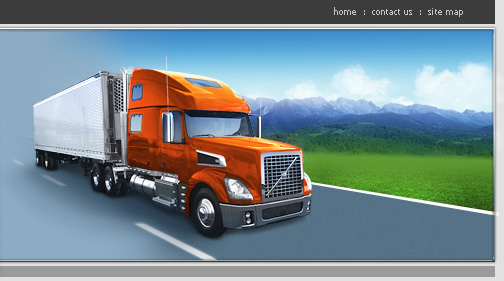|
|
Guide to a Smooth Move
Your Rights and Responsibilities
All moves made within the State of Minnesota are regulated by the Minnesota Department of Transportation (MNDOT). Movers must obtain authority to operate in Minnesota, they must have liability and cargo insurance on file with the state, and they must file and have approved all of their rates and charges in a document-format known as a tariff.
However, even with all of these regulations, knowing your rights and responsibilities when you move can go far in protecting yourself from unnecessary problems.
- Choosing a Household Goods Mover
- Estimates
- Read and Understand All Information Provided by the Mover
- Movers' Liability and Determining the Need for Insurance
- Problems - Loss or Damage Claims
- Storage in Transit
- Rembering the Basics
Choosing a Household Goods Mover
The following is to provide assistance in choosing a mover for moves within the state of Minnesota and helping you understand some of the common business terms and practices.
Minnesota has several laws in place to protect the consumer.
All movers in Minnesota must:
- be registered with the Minnesota Department of Transportation (MN DOT)
- have a unique MN DOT number
- carry property and liability insurance and
- publish the rates and charges for their moving services with MNDOT.
To check if the mover is legal, contact MN DOT’s Office of Freight and Commercial Vehicle Operations at (651) 215-6330 . Anyone who makes arrangements for drivers, vehicles, or transportation services for moving household goods are considered movers and must have all four of the above items to be considered a legal mover in Minnesota .
Estimates
To help you anticipate the cost of your move, a legal mover will provide a cost estimate based on several things.
1. Type of move:
- Local moves are defined as moves within the Twin Cities Metro area or within a city (such as St. Cloud or Duluth ) and are typically charged on a hourly basis. These charges are subject to the number of mover’s personnel provided and a minimum charge. The hourly charge may not always start and stop at the same time for different movers. Make sure you ask the mover.
- Distance moves are defined as moves outside a metropolitan area (from one city to another area – such as Minneapolis to Duluth ) and charges are based on the distance traveled and the weight of the shipment.
2. Extra services provided could result in additional charges:
- If you request and the mover provides services such as packing and unpacking
- If you have heavy or bulky items to be moved such as pianos or safes
- If mover must hand carry goods up stairs
- Ask your mover if they provide any additional services and any charges for service requested
Estimates for moving your personal property in Minnesota are not binding on the mover even if given in writing. Charges for moving your personal property are contained in a published document (tariff) on file with MN DOT and that document must be made available by the mover to you upon your request. The mover must charge the exact rates filed in their tariff and are not allowed to deviate from the tariff. Be sure to call several movers to obtain estimates. Be wary of a mover who gives you a noticeably low estimate. Also, check with MN DOT and the Better Business Bureau to obtain complaint figures for any prospective movers.
Read and Understand all the Information Provided by the Mover
The mover should provide you with the following basic documents as part of your move:
• Order for Service (also called Driver’s Order) is a list of all the services the mover will perform and charges for those services, the location where the property will be picked up and delivered to, estimated time and date of pickup. This is done prior to the day of the move. If at time of pickup, driver finds additional items to be transported than those named in the order or if any other revisions are required, these revisions must be noted on the Order for Service and signed by you and the driver.
• Bill of Lading is the contract between you and the mover and a receipt of your belongings. Mover is required to prepare a Bill of Lading for each move. You must be given a copy of the bill of lading before the mover leaves your residence at origin. Read this document very carefully as it will contain information concerning your move and the mover’s liability for loss or damage to your belongings. You must sign the Bill of Lading at loading point and check at unloading point that all your property is delivered. Customer must pay the charges for the services on the Bill of Lading. Mover has the right to accept or deny certain types of payments.
Remember – do not sign blank documents
Mover's Liability and Determining the Need for Insurance
- You and the mover should determine the need for insurance coverage of your property before the move. If you have items of high value such as artwork, expensive furniture or electronics, you may want to obtain special coverage of your property.
- In Minnesota , the mover’s required minimum liability for damage to your belongings is 60 cents per pound per article damaged. For example, if a 10 pound lamp is damaged, the most you could recover is $6.00. This is called the released value of the shipment. There is no additional cost for this.
- Mover is required to explain your valuation options and any cost involved in valuation of your property. The Bill of Lading has a specific location for you to accept the released value of 60 cents per pound or to declare a different value for the shipment. This area must be signed by you either, accepting, declining or declaring a different value. If you declare a different value, that will be mover’s maximum liability.
- Most movers will offer alternatives to their minimum responsibility. Get the alternatives in writing and make sure you understand your options and the costs for those options. Ask if there is a deductible.
- You may also elect to purchase “trip transit insurance” in a specified amount. A certificate of insurance issued by an insurance company must be provided to you. Ask if there is a deductible. Check with your insurance agent to see if this type of coverage is available under your homeowner’s or renter’s policy.
Problems - Loss or Damage Claims
• If your belongings are lost or damaged while in possession of the mover, request a claims form from the mover. The claim must be submitted to the mover within 9 months of delivery of your property. If a mover denies or disallows your claim, you have two years and one day from the date of the mover’s written denial to institute a civil suit.
• Most movers will repair or replace damaged items according to an item’s depreciated value and the agreed to released value, if applicable.
• If you are dissatisfied with the service provided by your mover or if you believe they may not have charged you correctly, you may file a complaint with MN DOT. MN DOT can help customers who are having problems with a mover who does not honor their coverage responsibilities for loss or damage.
• MN DOT will not act as a collection agency. MN DOT does not have the authority to determine mover liability in particular circumstances or the amount necessary to repair or replace items
Storage in Transit
If your new residence is not ready to move into, it may be necessary to have your goods stored for later delivery. If your goods are in storage for 90 days or less, the terms of the storage fall under the mover's tariff on file with the Minnesota Department of Transportation.
However, if the length of the storage period exceeds 90 days, you may need to sign a separate bill of lading for the warehousing of your goods. Warehousing of your goods fall under the regulations of the Minnesota Department of Agriculture. Therefore, the storage of your goods are subject to the rates, terms, and conditions of the mover's warehouse rate schedule on file with the Department of Agriculture.
- Moving companies provide a variety of services with a wide range of fees. Compile a list of movers; inform them of the destination and timing of your move; ask about services they offer; and make sure you understand their estimates. Then compare and see which mover suits your needs and budget.
- Check with MN DOT to see if the mover you select is legal.
- When
you choose your mover, be sure you understand:
• The rates and charges that will apply.
• The mover’s liability for your belongings;
• How pickup and delivery will work; and
• What claims protection, you have.
- Specify pickup and delivery dates in the order for service.
- The bill of lading is your contract with the mover. Read it carefully. If you have any questions, ask your mover.
- All agreements should be in writing.
- Any changes should also be in writing, initialed by you and the mover.
- Be sure you understand the extent of your mover’s liability for loss and damage.
- You have the right to be present each time your shipment is weighed.




